Portfolio Institutional: Is volatility on the way as many commentators predict that it is?
Pete Drewienkiewicz: We have had a reasonably smooth ride and therefore it is sensible to predict that we will have more volatile times in the future. Do I have any sense of when that might come or what will cause it? Making predictions like that would be like throwing darts at a dartboard. We should take into account that the past 10 years have been abnormal. Therefore, if there is a concern it is complacency. The central bank activity that came into support the markets has almost conditioned people to invest in a certain way.
Tapan Datta: We are likely to see volatility at higher underlying levels, but today’s levels are nothing to get over-excited about. Markets have been calm this year. That may be due to central banks providing reassurance to markets, but we would expect, on an under- lying basis, that volatility is likely to move up in the next few years.
Femi Bart-Williams: If you plotted the “spike” volatility that we have seen over the past 12 months on a long-term chart you would barely see it. There is an argument that such a low volatility environment cannot continue. So preparing for the eventual increase in volatility will be key.
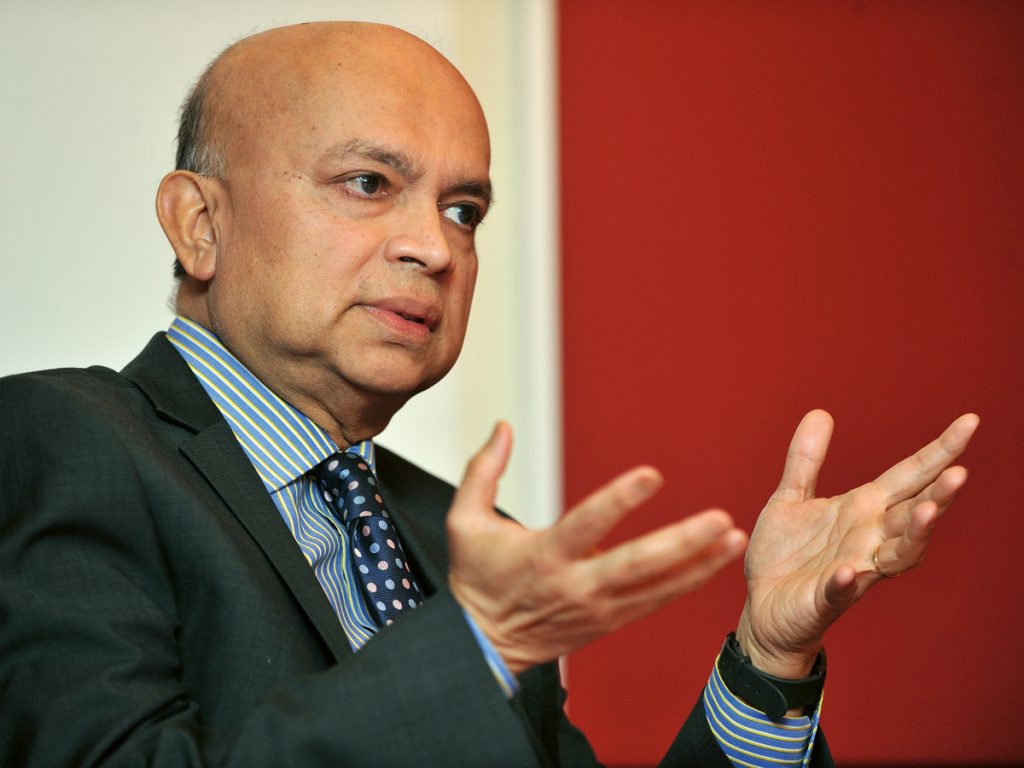
“Across the spectrum there is less tolerance and less of an ability to withstand sustained market volatility than there ought to be.”
Tapan Datta, Aon
Rob Booth: If we held this roundtable two years ago would the conversation have been similar. It feels like we’ve been hearing for a while that: “Returns are going to be low and volatility will return, so it’s going to be a bumpy ride. Let’s start preparing for it.”
In the defined contribution (DC) environment, if members read that in the press they might sit in cash. 2018 would have been a nice year to be sitting in cash, but that corrected itself earlier this year. The world seems to be controlled by central bankers, so it depends on what happens in that environ- ment to determine the sort of volatility that could hit the markets.
Andy Scott: In DC volatility is very much around investments, what’s happening to assets. On the defined benefit (DB) side, it is about your definition of volatility. Is it assets going up and down, or assets changing compared with the cost of your pension? So the funding level, effectively. If your assets are going up 10% but the cost of a pension is going up 20%, you are in a bad position.
So for DB schemes, volatility is more about how the assets vary compared with the liabilities. That some- times is quite difficult for trustees to understand or to get across.
Drewienkiewicz: The time horizon for a lot of DB schemes is getting pulled in and with volatility what’s important is your time horizon.
It is different for the DC scheme that Rob’s looking after where it is potentially dangerous for people to have too many levers that they can pull because they don’t want to worry about it too much. But for DB schemes where the time horizon’s coming in, people are starting to think about buyout.
Obviously, you can be more sensitive to a bit of volatility and it might make a difference between being able to buyout now or pushing it out for 18 months.
Booth: In DC, we might have a long-term horizon but if a member looks at their benefit statement and the £1,000 they have put in over the past 12 months is now worth £800, they start thinking: “I’m not sure about this pension thing.”
So it is getting the right balance as trustees. You have got to have your foot on the pedal but without scaring the horses.
Scott: The financial education of the members is a big part of them not getting scared by that £1,000 becoming £800, especially when they are 25 and have 40 years until it all comes back to them.
PI: Have trustees been focusing on financial education in recent years?
Booth: Yes, but, from an auto-enrolment perspective, when you have all these new savers you must be careful what you wish for. Only a small proportion of members open their benefit statements or register online to see what their pension is worth. The whole idea of au- to-enrolment works because of inertia, people weren’t engaging. The more they engage, the more they understand, the more scared they could potentially become.
So in a way it is great if they are not looking at the valuations, especially if markets are go- ing to drop. If they start understanding a little bit then that knowledge can be dangerous. They could start thinking: “I didn’t want to be here… I’m out.”
Bart-Williams: The clarity of the objective is crucial here. It is one thing to measure the value of the assets versus the value of the liabilities, but if you are looking at a scheme in run-off then, arguably, if you hold a corporate bond port- folio for the resulting cash-flows and don’t intend to sell those assets then you can look at how much of your benefits could you pay. That measure of volatility gives you quite a different answer to: “What’s my corporate bond worth?”
Whether it’s DB or DC, having that objective crystal clear in your mind, and then managing and measur- ing volatility and risk relative to that, is key to making good investment decisions.

“Because the markets have gone up in the past seven or eight years, people have almost forgotten that growth assets can go down as well as up.”
Andy Scott, Dalriada Trustees
Drewienkiewicz: Exactly. We have seen clients coming up to buyout thinking about having a measure of the corporate bond spread baked into the liability discount rate. They are mechanistically starting to reduce the volatility that they observe on the funding level, which is appropriate because you have a closer and closer match for the assets that the buyout provider is looking at to derive their price. So it’s context led.
Datta: There’s a paradox here. For the DC investor the standard adage is that you need to take a long- term view, take the bumps and ride the volatility out because these are short-term market moves. If you try to be too clever with the time you have you are going to lose a lot of your wealth.
That message doesn’t seem to get across terribly well. When individuals look at their pension statements and see that their £1,000 is now worth £800 they could disinvest at the wrong time.
Institutional investors are supposed to be better informed but their ability to ride out funding level volatility has declined. Across the spectrum there is less tolerance and less of an ability to withstand sustained market volatility than there ought to be. That is becoming a problem.
Scott: There are several ways pension schemes are trying to tackle volatility. Liability driven investing (LDI) has been trying to remove interest rate and inflation risks.
Everyone is still looking for that extra return from equities to get them through. If you are underfunded it’s a different situation. If you are not ready to buyout you have to take more risk and be subject to volatility. Structured equity can help ride out the bad times but not take so much advantage of the good times. These are the ideas that schemes are going through to cope with the fluctuations that are happening but a lot of it is education. The hardest thing about LDI was getting trustees to understand it. It was the same with structured equity. It is a good idea, but it might take a year or two to come in because people don’t understand it or don’t feel comfortable with it.
PI: How are you positioning your scheme to face any volatility that may lie ahead?
Scott: It depends on where you are. If you are at maturity and almost at the buyout stage, then you are structuring it so that you can hand it over to an insurer. If you are about 95% there you don’t want to risk your funding level falling.
Drewienkiewicz: It is an interesting challenge because as you get closer to buyout you sell more and more risk assets. An insurer is not going to want to take all your assets, particularly the higher risk and non-investment grade corporate ones, so you start to take them all down.
It is like pushing out from the edge of a swimming pool. If you make it far enough to get to buyout, great, but if you don’t make it then you haven’t got any of your risk assets left.
Scott: When a scheme has almost got to the end it doesn’t want to go back to 90% funded. Schemes have been closed to new members and winding down for 10 to 15 years, when deficits started coming in. So when you get within one length of the swimming pool left, people will sell on the understanding that it might cost them, but they cannot afford to go back a length.
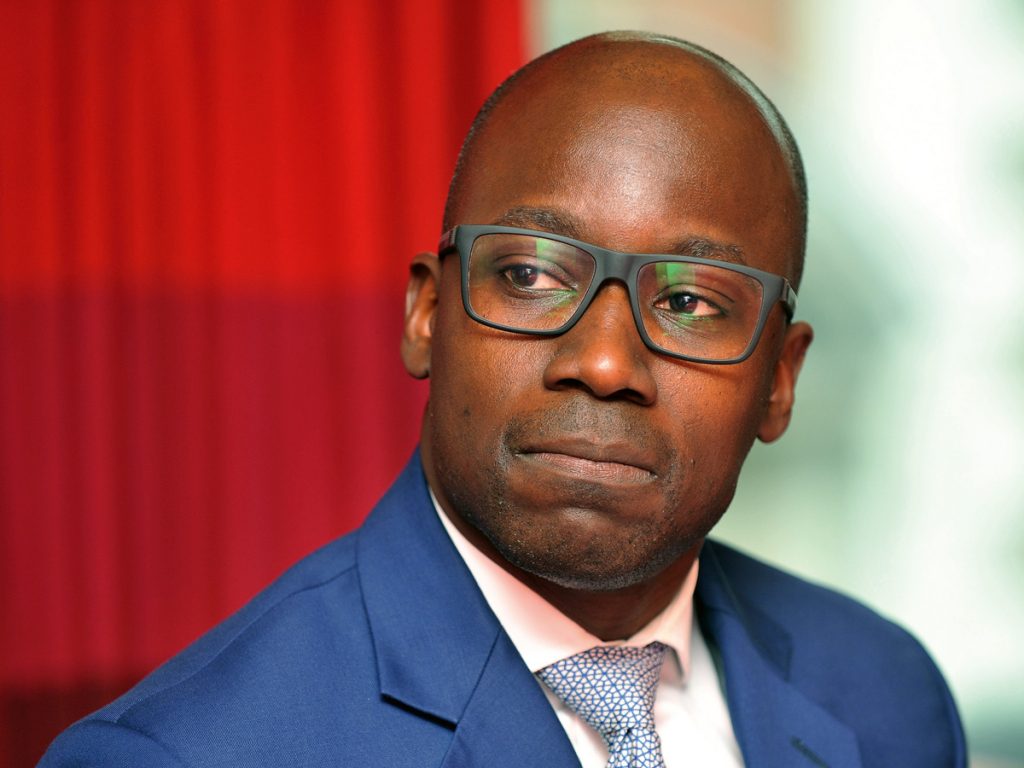
“Journey planning is important. It is true it might not get you to the end of the swimming pool, but it can minimise the distance by which you might be short.”
Femi Bart-Williams, Legal & General Investment Management
Bart-Williams: Investors get more risk averse as they get closer to their end goal, whether that’s buyout or self-sufficiency. Even if you don’t end up buying out there’s a great synergy between what a buyout- ready investment strategy looks like and what it looks like if you are paying the pensions yourself. After all there is some logic as to why insurers invest the way they do. It is not as binary as buyout or nothing; there are shades of grey in between. A sensible strategy towards the endgame will probably involve a lot of interest rate and inflation risk being hedged, a significant amount of corporate bonds and a little bit of extra return-seeking assets.
PI: What about schemes that are 10 years away from buyout?
Bart-Williams: You can probably distinguish between those who are close to an endgame, whatever that might be, and those who are significantly far away.
If you are significantly far away that just necessitates taking some risk to plug the funding gap. The key thing you can do to manage that growth risk in the short term is to diversify your assets. So it’s not just equities but corporate bonds, emerging market debt and private equity, etc.
We see draw-downs of about half on a diversified portfolio compared to equities. So you can manage risk in that way. LDI can help mitigate short-term volatility, so can equity protection. For instance, if mar- kets are relatively high and your funding level has benefited from that, it may be the time to buy some protection against a market correction or a downturn. So there are different tools that you can use if you are further away from your endgame.

“The world seems to be controlled by central bankers, so it depends on what happens in that environment to determine the sort of volatility that could hit the markets.”
Rob Booth, NOW:Pensions
Scott: On the DC side, if the £1,000 rises to £1,200 then it’s a bonus. If you build in equity protection so it only goes up to £1,100 your members would still be happy if it stops it going below £1,000.
Booth: Because of the charge gap investment management budgets are tight, so you need to think about the cost of buying protection.
I see protection as a bit like motor insurance. If you are driving along and you have a little prang, are you going to claim against it while your car’s still drivable, because you can only claim once, or wait for a complete write-off and then claim?
There are other ways you can take risk out of the portfolio when markets drop by a certain percentage, but the trouble is when do you put risk back on again, which is the hardest thing by far. It is quite easy to work out when to take it off. All those things combined, particularly the cost angle, make it a nice-to-have. It could probably work in the flexible income draw-down space even more than the accumulation space.
Drewienkiewicz: That’s the difficulty with a lot of these protection strategies. It is easy to put things on and envisage how it can help you, but unless you have a clear game plan for how long you are going to roll it out for and what would make you take it off, it can be a governance drain.
Scott: In DB you leave it with the managers as much as possible and give them the parameters in which they can work. For DC, it is the member who sees the £1,000 going down to £800.
Someone I know who is in an equity fund told me: “The manager is useless. Previously it was always going up, now it’s going down.” That is level of understanding.
Booth: People tend to blame that on the pension rather than the fact that if you are going to get a decent return for your retirement you need to take some risk.
Some research that was done six or seven years ago said that people want to be savers, not investors. Investing means stock market, stock market means gambling, gambling means losing money. It begs the question, what do they think saving is? How do they protect their money against inflation?” Bart-Williams: What’s ironic about staying in cash is that it pretty much guarantees you a loss in real terms, i.e. inflation will likely erode the future purchasing power of that cash.
Datta: It is difficult to grasp the risk you take by sitting in cash in that returns are concentrated in quite a short period of time. The best of the gains can come in quite short periods, as little as 10 days of the year, so if you are out of the market you have missed out. A lot of investors fail to appreciate just how much risk they are carrying in being out of the market.
PI: So selling all your risk assets is not a good strategy?
Datta: It is bad for your long-term wealth and financial health. That said, there is also a sense that some of the conventional wisdom over-eggs it by saying: “Ignore the volatility, ignore the downside. The market dips will be followed by recoveries.”
Drewienkiewicz: In some markets that’s not happened. People are good at focusing on markets where you get V-shaped bounces but talk to people who have been invested in Japan’s equity market for 30 years. They have been waiting forever for that to happen.
Datta: There’s no single solution to managing volatility. One must appreciate the risk of being wrong in terms of market timing, but also what a broad valuation means for implied expected returns.
You still have to make a judgment on whether over the next three to five years the risk you are taking is worth the likely returns, and if it isn’t then potentially there should be an encouragement to de-risk but not to sit in cash. Just take a bit less risk because that risk is not being well rewarded.
You have to make that judgment without going to the other extreme of piling into cash, because that doesn’t make any sense at all.
Drewienkiewicz: The challenge is that on the flipside of the volatility coin there should be opportunities, but equity markets are difficult to call. You can obviously use valuation as a type of compass but it’s still not a perfect guide. There are other asset classes, credit springs to mind where the mean reversion is much stronger, where volatility should allow you to take advantage of the opportunities. So if you have a portfolio that has spare cash we like to see volatility, particularly in credit markets, as an opportunity to buy, depending on a client’s risk preferences. I feel much more comfortable doing that in credit than in equity markets where that mean reversion is much weaker.
Scott: A big factor for DB schemes is the covenant, the strength of the employer. If the employer wants you to invest in a group of risky assets because they want the upside then that’s helpful for me as a trustee so long as the employer understands that risk. Because the markets have gone up in the past seven or eight years, people have almost forgotten that growth assets can go down as well as up. Investing in equities is seen as an automatic way of getting an extra return, but it is potentially a way of losing that extra return.
Datta: One of the challenges is that understanding how much risk you need to take to earn a return is a tricky concept to grasp.
Various trustees have said to me when I talk about risk-adjusted returns: “Ah but, you see, risk-adjusted returns do not buy you lunch; only returns do.”
This is the difficulty. They want the risk when they know they can get the upside but they want none of the downside risk. There is no investment on earth that can do that. That is the aspect that is difficult to grasp for a lot of people.
Scott: It’s the proportion that you put into the risky assets. Asset allocation is the main driver of what your returns are going to be. Being in the right place or the wrong place doesn’t really matter.
Booth: What strikes me is that bit about understanding how wrong it can go. Instead of looking at the funding level, a sponsor needs to understand what the contributions at risk are and make a calculated view around what they would be on the hook for if it goes wrong.
Where you have a weak covenant it might make sense to take more risk while you know that the employer’s still around rather than sit out a long recovery plan. It is the combination of trying to close a big funding gap with a weak sponsor covenant that makes the volatility greater.
Bart-Williams: I would go one step further. Ideally it would not just be a statistical measure of covenant risk. The correlation of that with pension scheme risk is useful to understand, e.g. the economic scenario that might cause your sponsor stress and hopefully making sure that that is not the same economic scenario that is causing pension scheme stress.
Drewienkiewicz: That’s easy to say. In practice you are going to be investing in a lot of corporate businesses, via equity or debt, and in all likelihood your sponsor is a corporate business.
Bart-Williams: Yes, it is a corporate so general corporate risk is important, but there are also sector- specific risks. So you can’t do it with forensic accuracy but you can do a pragmatic approach and ask: “Is it oil prices that are going to cause my sponsor stress? How might that impact my pension scheme investments?”
It is one of a number of measures that you should probably look at but it’s not a silver bullet.
Scott: If a scheme has a risky covenant, the regulator is taking a much closer look at the investment strategy or the funding strategy because they don’t want the scheme going into the Pension Protection Fund.
Whereas it was the case in previous years that your best chance of trying to make up for any shortfall was to take a bit of investment risk, that strategy would come under quite a lot of scrutiny by the regulator and they would probably stop it.
Bart-Williams: Scenario testing and statistical stress analyses are important. Sometimes you get con- sequential risk. For example, if you use derivatives to hedge some of your risk then there might be a collateral call on that.
Having a plan for collateral and not parking that in assets that are volatile and market-sensitive is a sen- sible thing to do to diversify that risk, otherwise your collateral pool is getting depleted at precisely the time you need it.
Drewienkiewicz: This is about holistic risk management. That is what the regulator’s been pushing hard on.
Bart-Williams: It is certainly something that they should plan for. I’m not saying sit in cash, but it’s useful to have a waterfall so if you need collateral you can get it. Then you make sure that those assets in which you park your collateral are ideally market neutral, certainly close to duration neutral, so you don’t have significant interest rate and inflation sensitivity in those assets.
Typically, it is your interest rate and inflation hedges that might need collateral at a certain point in time. So it is important to have a plan for collateral.
PI: Could volatility force a move back to active management?
Booth: Over the past year or so there’s been a lot of commentary suggesting that we are heading towards an environment where active management will come into its own.
I don’t know whether that’s right and only time will tell. Intuitively, it feels like there could be opportunities to identify some underappreciated value, but the pressure on active managers will only increase if that doesn’t turn out to be true.
Drewienkiewicz: I have seen studies that support this thesis and studies that debunk it, so I’m not convinced there’s any significantly clear evidence that active managers do better in more volatile times.

“The time horizon for a lot of DB schemes is getting pulled in and with volatility what’s important is your time horizon.”
Pete Drewienkiewicz, Redington
There are investing styles that many managers follow, particularly quality and defensive, that tend to underperform in the market in big rallies but perform when we have volatility.
To say broadly that active management has a better time when volatility hits…to be honest, some people are guilty of a bit of wishful thinking there.
Datta: The issue is if markets lose their thrall to central bank policies then internally there’s more diversity in the markets, the interim market correlations will fall and that will help active managers.
We have seen false dawns on this over a number of years, so I’m not holding out any hopes that active management is making a big comeback. The other point is that almost 50% of US assets are passively managed. There is some academic work suggesting that there is a point at which active managers are advantaged, but volatility per se is not going to rescue active management.
Bart-Williams: Volatility returning to the market can be anyone’s friend. If you are a passive investor, for example, and you imagine that volatility is doing an oscillation around a fundamental true value, perhaps due to sentiment say, if you average in over time volatility can be your friend. So volatility is not only your friend when you are active.
Volatility per se does not necessarily mean active managers are going to outperform. However, if increased volatility were due to a lack of support from central banks, which was previously making it difficult to distinguish between good and bad valued corporate bonds, then intra, and inter, market vola- tility could return and that could be advantageous to active managers.
I’m not sure that it will necessarily play out that way because philosophically active management is skill- driven and, arguably, that should be evident whether it’s in volatile or less volatile markets.
Scott: From a trustee point of view, I wouldn’t just switch to active management because volatility can also be your enemy.
One of the ways to reduce volatility is through journey plans. By that I mean banking your gains when you are ahead of your target and also taking harder, riskier decisions when you are below it. This will keep the scheme within pre-agreed boundaries on its journey to its target position and whilst it might mean missing out on some of the good times, the scheme will not be over exposed to the bad times.
It must be frustrating, however, for active managers who have done a great job only to be told to sell their good-performing investments because they are ahead of the game and transfer them elsewhere to safer corporate bonds or gilts.
Drewienkiewicz: These marginally de-risking plans don’t make sense. There’s that final length of the swimming pool risk. If you are swimming slower every second and you don’t get it absolutely perfectly right then you get stuck and have no risk assets to get home.
They need to be run with substantial buffers and a lot of caution around that. Maybe you can start with more risk than you would run if you just ran a lower level of risk for a longer period of time.
Scott: If you know you are going to keep looking at it and adjust it appropriately. It’s not so much in the final length; in the final length you are pretty well de-risked and the employer is prepared to pay the 2% if it doesn’t get to the end. But when you are 10 or 15 years away you have to take risks to take advantage of the good times.
Datta: Yields are low so the expected returns in fixed income are low, while risky asset valuations are generally on the high side. The return profile doesn’t look brilliant, so we need manager skill to add alpha. The question is, are we going to get it? It is more urgent than ever that we get that but it is still a challenge in these markets. As we saw last year with active management, it’s a big challenge to get that excess return from skill.
Bart-Williams: Active management is more suited to particular strategies, so a high-yield bond strategy, for example. One should not necessarily go hunting for alpha everywhere.
Journey planning is important. It is true it might not get you to the end of the swimming pool, but it can minimise the distance by which you might be short. For most corporates there is a distance within which it’s tolerable, and it makes sense to manage your risk as you get closer to that endgame. It is consistent with the concept of being more risk averse as you have more to lose.
Scott: Regulators are going to be asking about dividends in the future whereas they may not have done so in the past. That is going to be an interesting.
Bart-Williams: We get interesting reactions when we speak to clients about their value at risk. If you start from a place where you put your biggest bets on the views that you hold strongest then it should follow that the value at risk, however measured – whether it’s funding level, etc – when decomposed should show where you have your strongest views.
It is rarely the case that trustees have the strongest views on long term interest rates or inflation. They inherited these risks, yet they tend to be the dominant risks of many pensions schemes. It is back to that point about being aware of where your risks are coming from and sizing them accordingly, not unwittingly betting the whole house on long-term rates going up or inflation coming down.
Scott: On the DC side, is being active or passive something that you look at?
Booth: It’s mostly underlying passive. It is all about working out where the risk is going to be allocated rather than where the assets are going to be allocated, then trying to allocate the risk in a diversified way that has the right level of portfolio risk and using the underlying instruments, which will be fundamentally index tracking.
There may be some individual corporate bonds, for instance, but it’s a minority. In equities we will go for indices but trying to find indices that work for what we are trying to achieve can sometimes be a little bit tricky.
PI: Where have you allocated your equity portfolio?
Booth: We don’t like taking positions. If you tried to call the market two to five years ago you would probably have called it wrong. So our equity allocations are typically around a third UK, a third US, a third Europe and we might put some in the Far East.
PI: So how do you hedge currency risk?
Booth: We hedge currencies, but we use quite a lot of futures. So we have currency hedging built in. Scott: From the DB side, we were talking about less about equities full-stop. As the time horizons get pulled in schemes are investing less in the growth assets.
Drewienkiewicz: Equities are down to under 20% in a typical UK DB scheme. Almost everyone is global. Someone said to me it had been two years since they saw a big consultant search for a UK equity man- date. We did one at the end of last year but there hasn’t been a huge amount of activity in domestic equities.
Bart-Williams: The name of the game over the last maybe 10 to 15 years has been diversification. Out of listed equities and into other asset classes, for example private equities or infrastructure debt. The equity allocations that we see now are typically much lower compared to 10 years ago.
If you look at the diversified strategy compared to equities you can have broadly the same expected return when you allow for diversification bonus, etc, but maybe two thirds of the risk, and as a trade from a risk-efficient return perspective, that makes sense to a lot of investors. You would probably find more diversified strategies than you would find equities these days.
Scott: Where they are expanding is in credit. It’s something that regulators are trying to get what they call “efficient capital” for DC schemes. It’s trying to get DC investors into these, so its infrastructure, private lending and so on.
Datta: If time horizons are shrinking, then the capacity and the ability to withstand illiquidity have also reduced. That is not a logical fit if you are going towards buyout. That is the big problem behind increasing illiquid asset exposure.
Bart-Williams: In our experience, clients are clear on what they are using strategies for. Typically, illiquid assets are used for their cash-flow. You take income from them and they are typically distinct from the assets that you would sell if you need liquidity.
So there’s a liquidity ladder in our clients’ minds as to where illiquids sit, whether it is a buy and maintain corporate bond portfolio or emerging market debt. They sit at different rungs of that liquidity ladder.
Booth: It still gets difficult on the DC side. You have purchases and redemptions going all the time and so you need a daily valuation. We have just hit £1bn under-management, which is actually quite low to have meaningful illiquid assets in it because you need such a diversity of those liquids to stagger the valuations to make it fair.
PI: How do illiquids fit in with the charge cap?
Booth: The charge cap is a big issue. At the moment in DC, in everything you look at that’s illiquid there is a bit of a fudge to make it work. For DC members, for instance, it’s lovely to think: “Okay, I am invest- ing in that new hospital in Manchester,” but at the moment it’s just about getting those valuations right.
Drewienkiewicz: To come back to the core point, what you can invest in to make you much more relaxed about volatility is high-quality cash-flows that you know are going to get paid, it doesn’t matter where they are from. If you buy attractively-priced cash-flows then everyone’s happy.
The problem is that at the moment all the cash-flows that are in the public market are quite expensive. The cash-flows that for a little while we thought were a bit cheaper have been in the illiquid market, and it is difficult for DC investors to access those.
I would agree that if you are not careful there’s definitely an element of fudge that goes on, particularly in DC where the fee cap is even more of an issue.
PI: What impact will geopolitical risks have on the markets?
Scott: The uncertainty in the markets just now is making it difficult. What’s going on in the Commons, what’s happening with the US and China, all that stuff makes it difficult to know where to invest.
Drewienkiewicz: The smaller holdings in equities have helped that a lot. We obviously saw rates fall to the asset liability point, so funding levels, particularly where people aren’t fully hedged, will have been a lit- tle bit more challenging. Overall, people have weath- ered this reasonably well so far.
Bart-Williams: Volatility and uncertainty are almost existential. Today it’s the Commons, a couple of years ago it was Trump and before that it was the French elections.
There will always be a story that makes the world an uncertain place. If one accepts that, then doing a lot of the stuff that we talked about today – diversifying, being clear on what your endgame is and that your strategies align with that – will continue to be broadly the right thing to do.
Preparing for volatile times is something that we are just going to have to do forever.
Roundtable attendees:

Pete Drewienkiewicz, CIO, Global Assets
Pete became CIO Global Assets in July 2018, where he is responsible for leading the firm’s expansion into new markets. Prior to this, Pete was head of Manager Research since he joined back in 2011, where he led a team of dedicated investment professionals responsible for the research, selection and monitoring of asset managers across both traditional and alternative asset classes.
Pete also acts as lead consultant across a number of £3bn+ clients on an “asset only” basis and is a voting member of Redington’s Investment Committee.
Before joining Redington, Pete spent 10 years working in fixed income and derivative markets at several investment banks, including UBS, Barclays Capital and most recently Royal Bank of Canada. At each organisation he was responsible for client coverage across interest rates, FX and inflation products.
Pete holds a BSc in Economics from the London School of Economics.

Rob is Director of Investment and Product Development at NOW: Pensions.
He has responsibility for ensuring that the Scheme’s investment strategy is aligned to the requirements of scheme members, a process which starts by bringing the fund management capabilities of the Danish firm, ATP to the UK marketplace. He is also responsible for the development of products specifically for the benefit of scheme members.
He chairs the Member Forum, and is a strong believer that understanding how savers behave in the real world leads to the creation of the right products and the right investment strategies, supported by clear and simple messaging of investment principles.
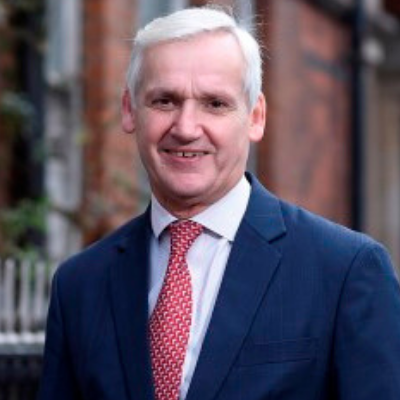
Andy is a senior trustee representative with Dalriada in Scotland and, as such, he acts as a professional trustee for Dalriada clients.
Andy is a very experienced professional within the pensions industry. His wide experience enables him to act on many Trustee boards, for both DB and DC schemes, either as Chair or as an independent trustee member. Andy has excellent communication skills that allow him to explain, in a simple and effective manner, the often difficult and complex issues that face Trustee Boards. As a result, his fellow trustee members, often lay members, are able to understand the issues and then make informed decisions on the actions to be taken. Andy also takes a senior role in the discussions with the sponsoring Employers, where he uses his experience and communication skills to find common ground from which solutions can be found that satisfy both parties’ needs and desires.
Andy has been and continues to be involved in the following activities:
- Regular speaker and contributor to trade press.
- Acting as a professional trustee in situations where there are difficult regulatory and legal issues and achieving outcomes that are mutually acceptable to all stakeholders.
- Overseeing company restructurings, scheme and company mergers, and successful asset transitions between investment managers.
- Undertaking reviews of Trustee/actuarial/investment advisors to ensure that the Trustee Board is achieving value for money from the service providers.
Andy started work with Dalriada in January 2019, having previously worked as trustee, senior scheme actuary and investment consultant for over in the pensions industry.
Andy is a Panel member of the Disciplinary Scheme for the Institute and Faculty of Actuaries. He also acts on the Board of three charities, namely the Merchant Company of Edinburgh (on the investment committee), Alzheimer Scotland (on the Finance Board) and the Melville College Trust (on the main board and the investment committee).
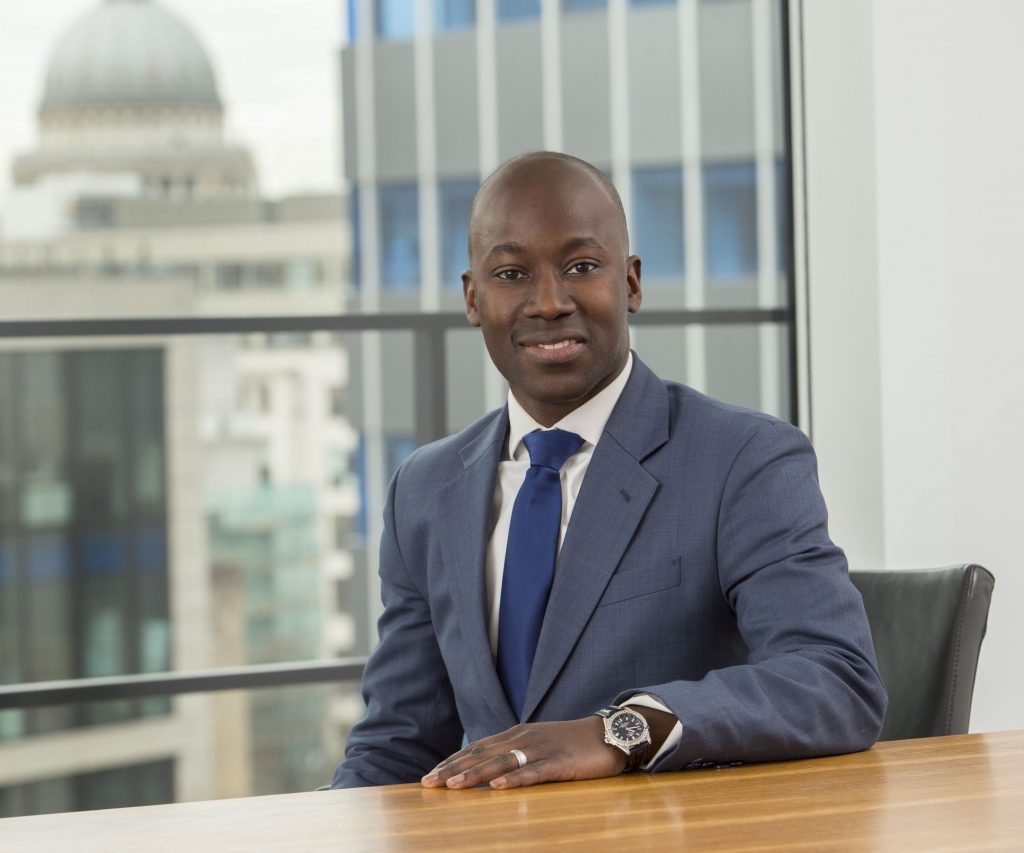
Femi Bart-Wiliams, Senior Solutions Strategy Manager, Legal & General Investment Management
Femi focuses on working with LGIM clients to implement LDI and broader solutions based investment strategies. Femi joined LGIM in 2009 from Deloitte. Prior to this role he worked for P-Solve Asset Solutions. Femi graduated from the London School of Economics in 1999 with a first class honours degree in actuarial science and is a fellow of the Institute of Actuaries.
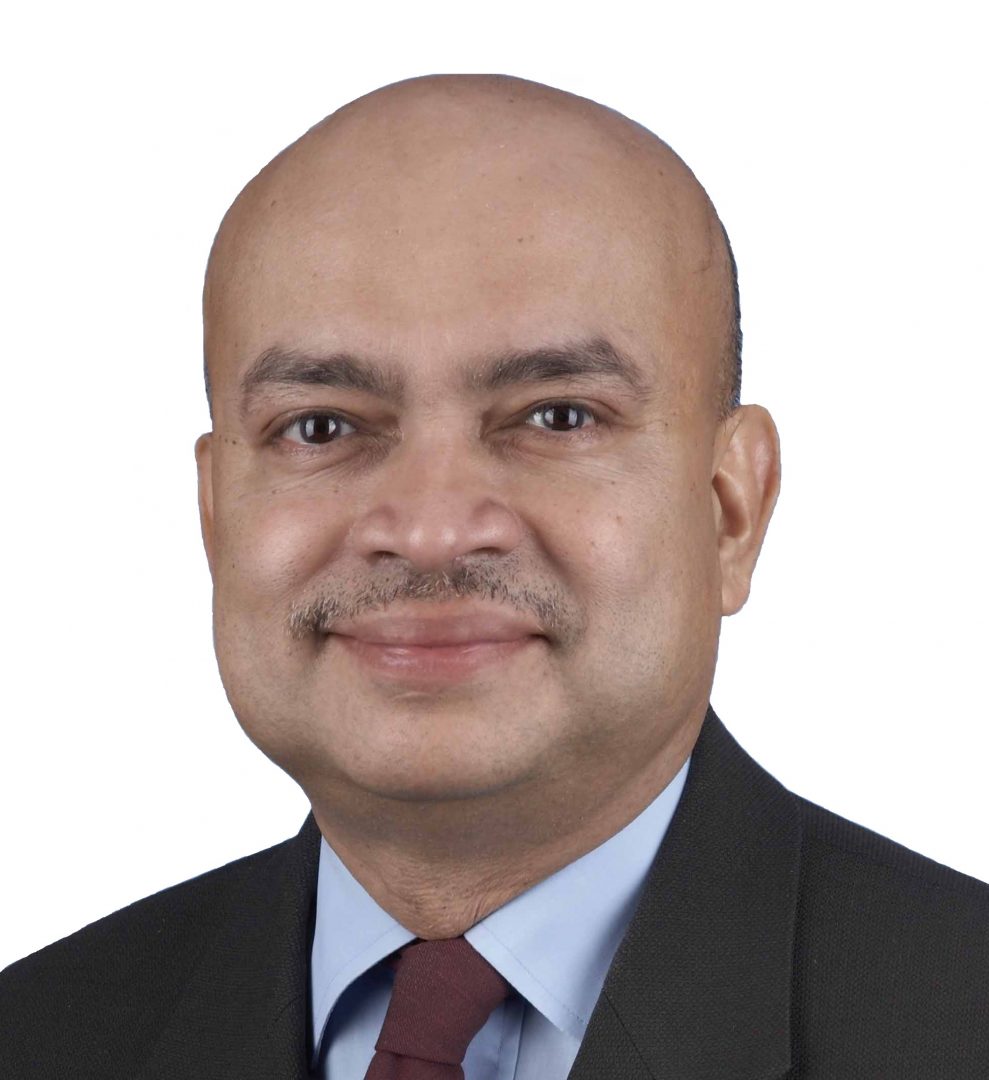
Tapan Datta is the Head of the Global Asset Allocation Team at Aon
This team of ten professionals is responsible for the firm’s long-term capital market assumptions and medium-term views. These views are extensively used in both investment advisory and discretionary services offered by the firm globally. Tapan is a big contributor to the firm’s thought leadership output in the public domain on a range of topics that impact today’s institutional investment environment and a regular commentator on CNBC, Bloomberg and IPE. He is a member of Aon’s UK and US investment committees. He has been with Aon since 2007. His previous investment experience was at Schroders where he spent nine years as Director of Investment Strategy for international equities and at American Express Bank as Deputy Chief Economist. He has a Ph.D. in Economics from Cambridge University, England
Kindly sponsored by:









